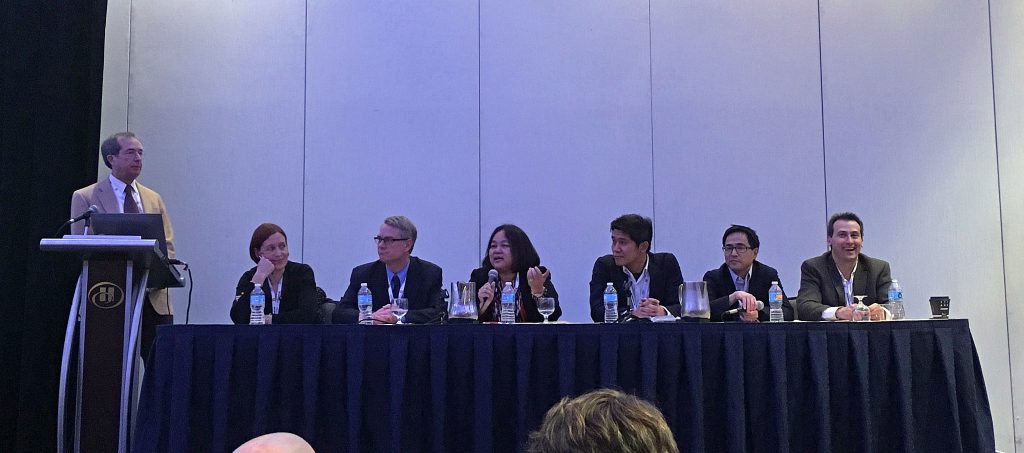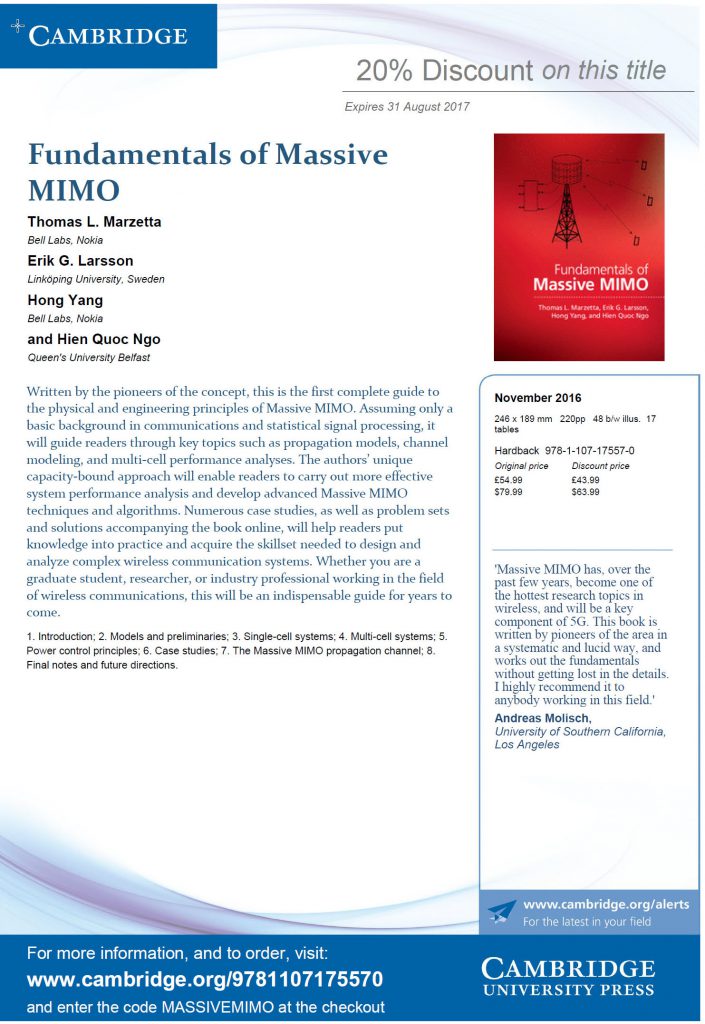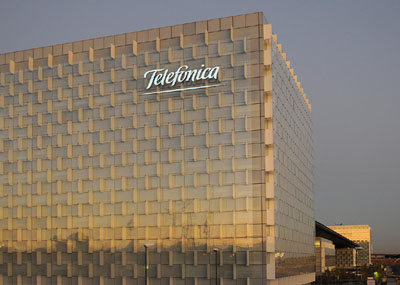The IEEE GLOBECOM conference, held in Washington D.C. this week, featured many good presentations and exhibitions. One well-attended event was the industry panel “Millimeter Wave vs. Below 5 GHz Massive MIMO: Which Technology Can Give Greater Value?“, organized by Thomas Marzetta and Robert Heath. They invited one team of Millimeter Wave proponents (Theodore Rappaport, Kei Sakaguchi, Charlie Zhang) and one team of Massive MIMO proponents (Chih-Lin I, Erik G. Larsson, Liesbet Van der Perre) to debate the pros and cons of the two 5G technologies.

For millimeter wave, the huge bandwidth was identified as the key benefit. Rappaport predicted that 30 GHz of bandwidth would be available in 5 years time, while other panelists made a more conservative prediction of 15-20 GHz in 10 years time. With such a huge bandwidth, a spectral efficiency of 1 bit/s/Hz is sufficient for an access point to deliver tens of Gbit/s to a single user. The panelists agreed that much work remains on millimeter wave channel modeling and the design of circuits for that can deliver the theoretical performance without huge losses. The lack of robustness towards blockage and similar propagation phenomena is also a major challenge.
For Massive MIMO, the straightforward support of user mobility, multiplexing of many users, and wide-area coverage were mentioned as key benefits. A 10x-20x gain in per-cell spectral efficiency, with performance guarantees for every user, was another major factor. Since these gains come from spatial multiplexing of users, rather than increasing the spectral efficiency per user, a large number of users are required to achieve these gains in practice. With a small number of users, the Massive MIMO gains are modest, so it might not be a technology to deploy everywhere. Another drawback is the limited amount of spectrum in the range below 5 GHz, which limits the peak data rates that can be achieved per user. The technology can deliver tens of Mbit/s, but maybe not any Gbit/s per user.
Although the purpose of the panel was to debate the two 5G candidate technologies, I believe that the panelists agree that these technologies have complementary benefits. Today, you connect to WiFi when it is available and switch to cellular when the WiFi network cannot support you. Similarly, I imagine a future where you will enjoy the great data rates offered by millimeter wave, when you are covered by such an access point. Your device will then switch seamlessly to a Massive MIMO network, operating below 5 GHz, to guarantee ubiquitous connectivity when you are in motion or not covered by any millimeter wave access points.




